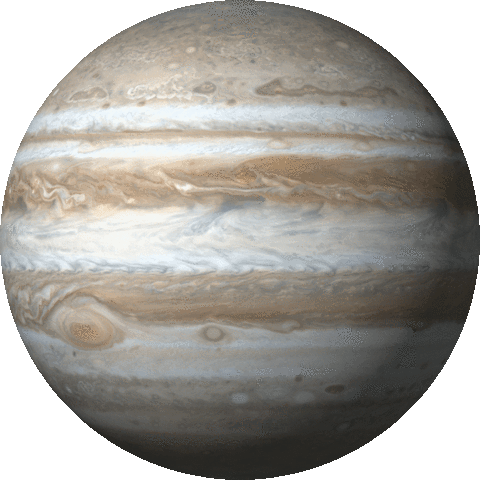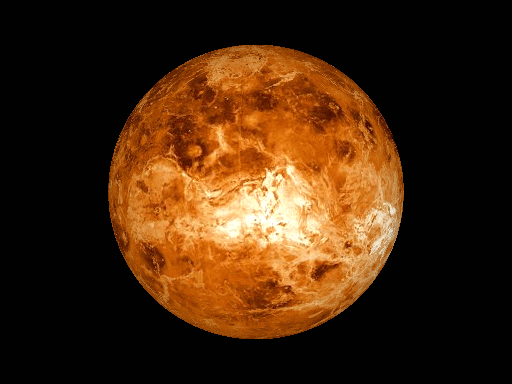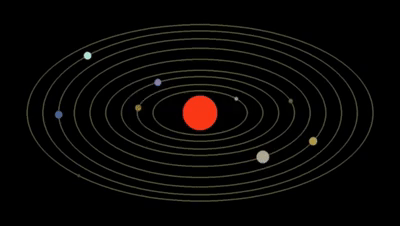Today (January 8, 1642) is the Memorial Day of Galileo Galilei, the father of modern physics, who played a pivotal role in the scientific revolution of the seventeenth century.

Galileo Galilei was born on
February 15, 1564, in Pisa, Italy. He was the first of six children born to
renowned flautist and composer Vincenzo Galilei and Giulia Ammanati. He chose to
learn flute music from his father. Doubts over further established theories
from the father must have had a grip on the value of well-defined test results
and the conclusions that mathematics and experiment would produce. When Galileo
Galilei was eight years old and his family emigrated to Florence, Jacobo was
left for two years with Porcini. It is then 35 km southeast of Florence.
Kamaltoles was educated at the convent in Vallampurosa, in the distance.
Galileo first joined the University of Pisa to study medicine. In 1581, while
studying medicine, one day, he noticed that the chandelier swings like a single
pendulum in large and small oscillations.

As he kept his heart rate he saw
that the chandelier was taking one wave at the same time in the big wave and
the small wave. When he returned to his house he saw two separate pendulums of
the same length wandering at different levels and they were both moving at the
same time. It was only after this that Christian Icons developed an accurate
clock using this protocol. So far in his life, he has been away from math
studies. Because at that time a mathematician was able to earn less money than
a physicist. But after listening to a lecture on geometry, he persuaded his
father to study mathematics himself. He then developed the prototype of the
thermometer). In 1586 he published a book on the hydraulic scales he had
discovered. This is what introduced him to the world of science for the first
time.

In 1589, he was appointed
professor of "mathematical cot" at the University of Pisa. Galileo's
father died in 1591. So he took on the responsibility of looking after his
brother Michelangelo. In 1592, Galileo joined the University of Padua and
taught geometry, mechanics and astronomy until 1610. During this time Galileo
made several discoveries in the pure basic sciences (kinetics, astronomy)
and process science (the strength of objects, the development of the telescope).
In 1615, Archbishop Bellarmine Copernicus stated that for the
heliocentric theory to be adopted, it must first be established that the sun
does not objectively revolve around the earth and that the earth revolves
around the sun. Galileo considered his reading theory to be the objective proof
that the earth stops working. Given the greatness of this theory, he
changed the title of his book, The Conversation of the Two Great World Systems,
to The Conversation of Ocean rising and Flow. The seafaring quote was removed
from the book's title after Galileo's house arrest.


As the Earth orbits the Sun on
its inclined axis, the speed of its rotation increases and decreases, which,
according to Galileo, creates a tidal wave in the seawater and creates ocean
currents. He first sent his doctrine to Archbishop Arsini in 1616. His theory
was the first to explain the effect of the ocean on the shape and time of
appearance of the oceans. He correctly described the lack of warmth in the
middle of the Adriatic Sea and the formation of roughness at the ends, although
it failed as a general principle for runners. If this theory is correct then
one day an upheaval must occur. Galileo and others were aware of the present.
In Venice, two rides a day were known to occur at 12-hour intervals. Galileo
ignored this mutation and said that the condition was caused by other factors,
such as oceanography and seasickness. Confirming Galileo's arguments to be
false, Einstein suggested that Galileo had developed these subtle arguments to
establish objectively the rotation of the earth without proof. Galileo ignored
his contemporary Johannes Kepler's claim that the moon's gravitational pull
caused tides. And Galileo was not interested in the elliptical orbits of
Kepler's planets.

In 1619 Galileo came into
conflict with Oracio Grossi, a professor of mathematics at the Roman Roman
College. It first began as a discussion of the nature of comets, and after
Galileo published his treatise in 1623, it eventually expanded into a paradox about
the nature of science. The first page of the book mentions him as the foremost
mathematician and philosopher of the Tsukkani Empire. This book is considered
to be Galileo's scientific policy statement, as it is rich in ideas on the
scientific practice of the book. In early 1619, Pastor Crazy published an
unnamed pamphlet, The Astronomical Debate on the Three Comets of 1618. It was
lazy about the nature of the comet that appeared in November of the previous
year. In it, Crazy came to the conclusion that the comet was a fiery celestial
body operating at a constant distance from Earth. He also announced that it
should be located farther away from the moon as it is slower than the moon.

Galileo was the first scientist
to explain the laws of physics very clearly in mathematics. Galileo developed a
telescope in 1609 with a magnification of 3x. He then developed telescopes up
to 30x magnification. Through a Galilean telescope, the viewer can see large
upright images. Galileo used this to explore the sky. He was one of the very
few people in those days who could make good telescopes for this need. On
August 25, 1609, he described to Venetian lawmakers his telescope, which had a
magnification of about 8 or 9. Galileo made money by donating his telescopes to
seafarers. The merchants saw the telescopes in good use at sea. He published
his early telescopic astronomical observations in March 1610 in a short
dissertation entitled Citrus Nuncius.

On January 7, 1610, Galileo saw
three stars near Jupiter. In the following nights, he noticed that these
"stars" were moving relative to Jupiter. He, therefore, discovered that
they were not static stars. On January 10 he found one of them missing. He
thought it must have been hidden behind Jupiter. So he found that all three
must be the moons of Jupiter. He discovered the moon on the fourth Thursday,
January 13th. Later astronomers proudly named these four positions Galilean
moons. These moons are now known as Io, Europe, Canymet and Callisto. His
observations of Jupiter caused a revolution in astronomy. Until then,
Aristotle's idea that all astronomical objects orbit the earth dominated the
world. And at first, a lot of astronomers refused to believe this. His studies
were said to have been corrected by the research centre of Christopher Clavius.
Then when he went to Rome in 1611 he was received by a hero. Galileo continued
to observe the satellites for the next eighteen months, and in mid-1611 he
obtained remarkably accurate estimates of them. Kepler thought such a thing was
not possible.

Galileo was one of the first
Europeans to observe the black spots of the sun. Kepler unknowingly saw this in
1607. But then he thought it was Mercury. He made an observation that Mercury
was previously misunderstood during the Charlemagne era that it was actually
the black spot of the sun. The displacement of the Sun's black dots supported
Kepler's claim that the Sun rotates. And Francesco Cicci's observations on the
black dot shattered Ptolemy's astronomical claims. Through his telescope, Thomas
Harriet already saw the light on the moon not spreading as it should have if it
had been a compact orb. But due to his ignorance, he did not understand it
properly. Galileo understood that changes in the scattering of that light were
exactly what the mountains and pits on the moon were like. In his study, he drew
topological maps of the moon. He also predicted the height of the moon's
mountains. It was then revealed that the moon was not a fantastic orb as
Aristotle had long claimed.

Since September 1610, Galileo has
observed that the silver moon showed similar dimensions. The heliocentric model
created by Nicholas Copernicus suggests that Venus orbits the Sun so that all
its moon-like dimensions can be seen. But this cannot be explained by Ptolemy's
earthly model. Thus the earthly principle was thus shattered. Yet this can be
explained by the principle of half solar and half earth without the need for a
full solar policy. So a lot of astronomers first switched to half solar and
half earth theory and then to the full solar policy as a result of other arguments.
Galileo observed Saturn. And at first, it mistakenly thought its rings were
planets. Galileo saw the planet Neptune in 1612. It was mentioned in his
manuals as one of the dim stars. He did not know it was a planet. But he had
noticed that it was moving compared to the stars before he lost sight of it.

Between 1595 and 1598, Galileo
developed a geometric and military compass. For military personnel, it was used
not only to properly raise artillery but also to determine how much ammunition
was needed. In 1593 Galileo invented the thermometer. He made this possible by
using the expansion and contraction of air in a lamp to create movement in the
water in a tube attached to it. Galileo's student Vincenzo Viviani wrote a
biography of Galileo. In it, he dropped objects of different weights from the
sloping tower of the penny and showed that they both take the same time to come
down. This refuted the claim that the time taken for Aristotle's objects to
fall depends on their weight. Galileo had assumed that when an object falls it
will fall with a uniform velocity if it falls in a vacuum. Galileo also
accurately predicted the law of kinetics (d ∝ t 2) for an object to begin at
rest and move at a constant velocity. He has also made many contributions in
the pure fields of physics and mathematics.


He played a very important role
in the scientific revolution of the seventeenth century. Galileo is proudly
called the "Father of Vision Astronomy", the "Father of Modern
Physics", and the "Father of Modern Science". His major
contributions to optical astronomy were confirming the different faces of Venus
through telescopes, discovering Jupiter's four major moons (called Galileo's
moons in his glory), and observing and exploring sunspots. Galileo's solar
system was not accepted by others during his lifetime. A lot of astronomers
opposed this theory. At the time, most astronomers were adopting a geopolitical
or Tychonic system. Galileo later provided extensive evidence for his
heliocentric theory in his book, The Conversations of the Two Primordial
Worldviews. He was placed under house arrest by the Catholic Church from 1642
until his death for exposing to the public the Christian belief that the earth
and other planets revolve around the sun.


Galileo spent the rest of his
life under house arrest. It was while Galileo was under house arrest that he
wrote two of his greatest works, The Final, Two New Sciences. In this book, he
has compiled his research on the fields of dialectics, now known as the
strength of materials, which he conducted forty years ago. He later died of
fever and heart attack on January 8, 1642, at the age of 77 in Archeology,
Italy. The Tsukkani emperor, Ferdinando II, wanted to bury a marble monument in
the main area of the basilica in Santa Croce, where his father and ancestor
were buried.
Source By: Wikipedia
Information: Dr. P. Ramesh, Assistant
Professor of Physics, Nehru Memorial College, Puthanampatti, Trichy.
Get information like this
https://t.me/joinchat/jpqj3jQLN51kYTk9
Join Telegram Group.
https://chat.whatsapp.com/FisIzCe4Br2CRgxAiicUnf
Join WhatsApp Group
Thanks.
Also, Read
🛑👍 CSIR-NET Physics Materials and Problems
🛑📕 21 GB and Hundreds of Physics E-Books Collection.
🛑🛥️ How does an Electric Motor work? (DC Motor).
🛑🤹♂️ Science Academies' Summer Research Fellowship Programme for Students and Teachers 2022.
🛑🔌 How does a Transformer work - Working Principle electrical engineering.
🛑🎙️ Transistors Explained - How transistors work.
🛑🔥⚡ How Thermocouples Work - basic working principle.
🛑🔌 Voltage Explained - What is Voltage? Basic electricity potential difference
🛑🔌 What is CURRENT– electric current explained, electricity basics.

.jpg)

No comments:
Post a Comment